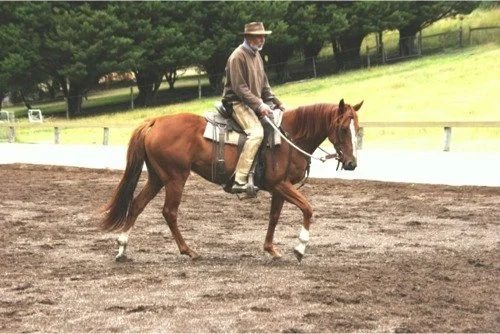One of the most useful exercises any of us can apply when training horses is to practice transitions both between gaits and within a gait. Each transition requires a change of thought, so each transition reveals how mentally available a horse might be. Each transition helps improve a horse’s focus and sensitise our horse to our aids. Each transition aids in building strength. Each transition affects and (when done well) improves a horse’s balance. Transitions are a brilliant tool and every horse benefits from transitions that are performed well.
While transitions are potentially a very powerful training exercise, often there are sometimes problems with their execution. I want to briefly talk about what I believe is the biggest misconception about transitions and why some riders don’t take advantage of their full benefit.
Very many riders think that to inspire a horse to transition upwards they need to ask their horse to go faster. And when asking for a downward transition they need to ask their horse to go slower. In other words, going from walk to trot or trot to canter requires more throttle, while transitions from canter to trot or trot to walk requires more brakes.
In my view, a walk should have the same forward-thinking as a trot and as a canter, but a different arrangement of how the legs and body move. When asking a horse to transition from a walk to a trot, I’m not asking it to go faster. I’m just asking for a 2 beat stride rather than a 4-beat stride. When asking for a canter, I want my horse to have a 3-beat stride with a moment of suspension but with the same energy as it had at the 2-beat stride or 4-beat stride.
Now it may seem confusing at first because it’s hard to argue that a horse at a canter will not outrun a horse at a walk or trot. This is true. But the horse does not need to have a more forward thought or impulsion to cover more ground at a canter than it does at a walk. If a horse is walking with X amount of energy, it will cover less ground with each stride than a horse cantering with the same X amount of energy. But the transition from a walk to a canter is not a stronger thought for more forward or an acceleration of energy. It’s simply a different form of locomotion that causes the horse to cover more ground with each stride.
In the early stages of training, it can be necessary and even helpful to ask for an upward transition by asking a horse to go faster. Conversely, slowing a horse down can teach a horse to prepare for a downward transition. But this is just a stage of training transitions and not the end of training transitions. There comes a time when you want to cue a horse to transition to a 2 or 3 or 4-beat stride without changing the energy of the stride.
Nevertheless, people sometimes get stuck with the idea that upward transitions equate to a stronger forward thought in a horse, and downward transitions are cued by slowing a horse down. But the strength of a horse’s thought to go forward can (and often should) be the same whether walking, trotting, cantering, or anything in-between.

